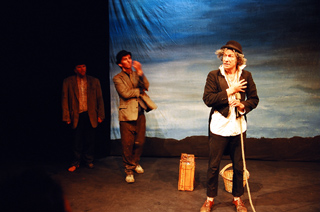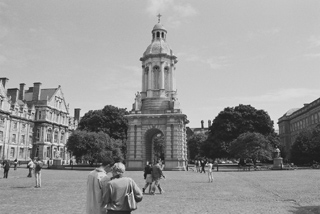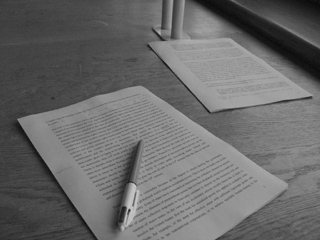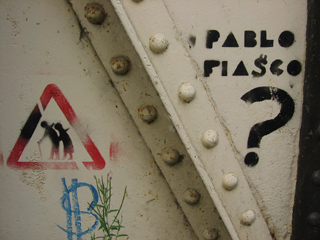For about three and a half hours tonight, I awaited essays from next month’s tutorial students in the MCR. Having exhausted what scaps of newspaper were available, I fell back to reading a copy of Dan Brown’s Da Vinci Code, abandoned by some departed grad student.
Two hundred and sixty pages in, and unlikely to proceed enormously further, I note somewhat pedantically that there have been no codes presented. At best, there have been a series of riddles. The book would be interesting for its historical asides, if I could consider them credible.
Rather than go on about that, I thought I would write an incredibly brief primer on how to actually encrypt a message:
Crypto by hand
In the next few paragraphs, I will show you how to use a simple cryptographic device called a transposition cipher. If you really want to learn it, follow along with a pen and paper. As ciphers go, it is very weak – but it is easy to understand and learn. For starters, we need a secret message. The following is hardly secret, but it will do for a demonstration:
“DAN BROWN IS A DUBIOUS HISTORIAN”
Next, we need an encryption key. For this type of cipher, we need two or more English words that do not use any letter more than once. It is quicker if they have the same number of letters, but I will use two with different numbers of letters to demonstrate the process:
“DUBLIN PINT”
Write the first word of the key onto a piece of paper, with a bit of space between each letter and plenty of space below:
“D U B L I N”
Now, add numbers above the letters, corresponding to their order in the alphabet:
“2 6 1 4 3 5
D U B L I N”
Now, add your message (hereafter called the plaintext) in a block under. If necessary, fill out the box with garble or the alphabet in order:
“2 6 1 4 3 5
D U B L I N
D A N B R O
W N I S A D
U B I O U S
H I S T O R
I A N A B C”
Note how each word of the first keyword now has a column of text underneath it. Starting with the first column in the alphabetical ordering (B, in this case) copy out the column, starting at the top, as a string of text. Make sure you understand what is happening here before you go on. The first column, read downwards is:
NIISN
Now, add to that string the other columns, read from top to bottom, in alphabetical order. You can leave spaces to make it easier to check:
NIISN DWUHI RAUOB BSOTA ODSRC ANBIA
Clearly, each column section should have the same number of letters in it. Make sure you’ve got the transcription right before going on. Note that the string above is the same letters as are in the original message, just jumbled. As such, this system isn’t smart to use for very short messages. People will realize fairly quickly that “MKLLINAIL” could mean “KILL MILAN.”
Moving right along…
Take the strong you generated a moment ago, and put it into a block just like the one you made with the first keyword, except with the second keyword. This time, if you need letters to fill out the rectangle, make sure to use the alphabet in order. You will need to remove the excess letters when working backwards to decrypt, so you may as well make it easier.
“3 1 2 4
P I N T
N I I S
N D W U
H I R A
U O B B
S O T A
O D S R
C A N B
I A A B”
Now we have the message even more jumbled. The final encryption step is simply to copy each column in that grid out, from top to bottom, in alphabetical order according to the second keyword:
IDIOODAA IWRBTSNA NNHUSOCI SUABARBB
Note: the shorter the key, the longer each column will be. The above string is your encrypted text (called cyphertext). This final version is a jumble of the letters in the original message. Remove the spaces to make it harder to work out how long the last keyword is. If you like, you can use that put that string through a grid with another word. Each time you do that, you make the message somewhat harder to crack, though it obviously takes longer to either encode or decode.
To pass on the message, you need to give someone both the cyphertext and the key. This should be done by separate means, because anyone who has both can work out what kind of cipher you used and break your code. The mechanisms of key exchange and key security are critical parts of designing cryptographic systems – the weakest components of which are rarely the algorithms used to encrypt and decrypt.
To decode it, just make grids based on your keywords and fill them in by reversing the transcription process described above. I am not going to go through it step by step, because it is exactly the same, only backwards.
If anyone finds out about the credibility of Mr. Brown’s historical credentials, it won’t be my fault.
One word of warning: this system will not keep your secrets secure from the CIA, Mossad, or even Audrey Tautou. This cipher is more about teaching the basics of cryptography. If you want something enormously more durable that can still be done by hand, have a look at the Vignere Cipher.
PS. It is rumored that this very blog may contain a tool that automates one form of Vignere encryption and decryption. Not that it is linked in the sidebar or anything…
[Update: 27 July] Those who think they have learned the above ciper can try decrypting the following message:
BNTAFREEHOOI-LTOSIRISOTWD-FTNWAOEYSOXT-ERASEAAAKGVE
The segment breaks should make it a bit easier. The key is:
SCOTLAND HIKE
Good luck, and please don’t post the plaintext as a comment. Let others who want to figure it out do so.





